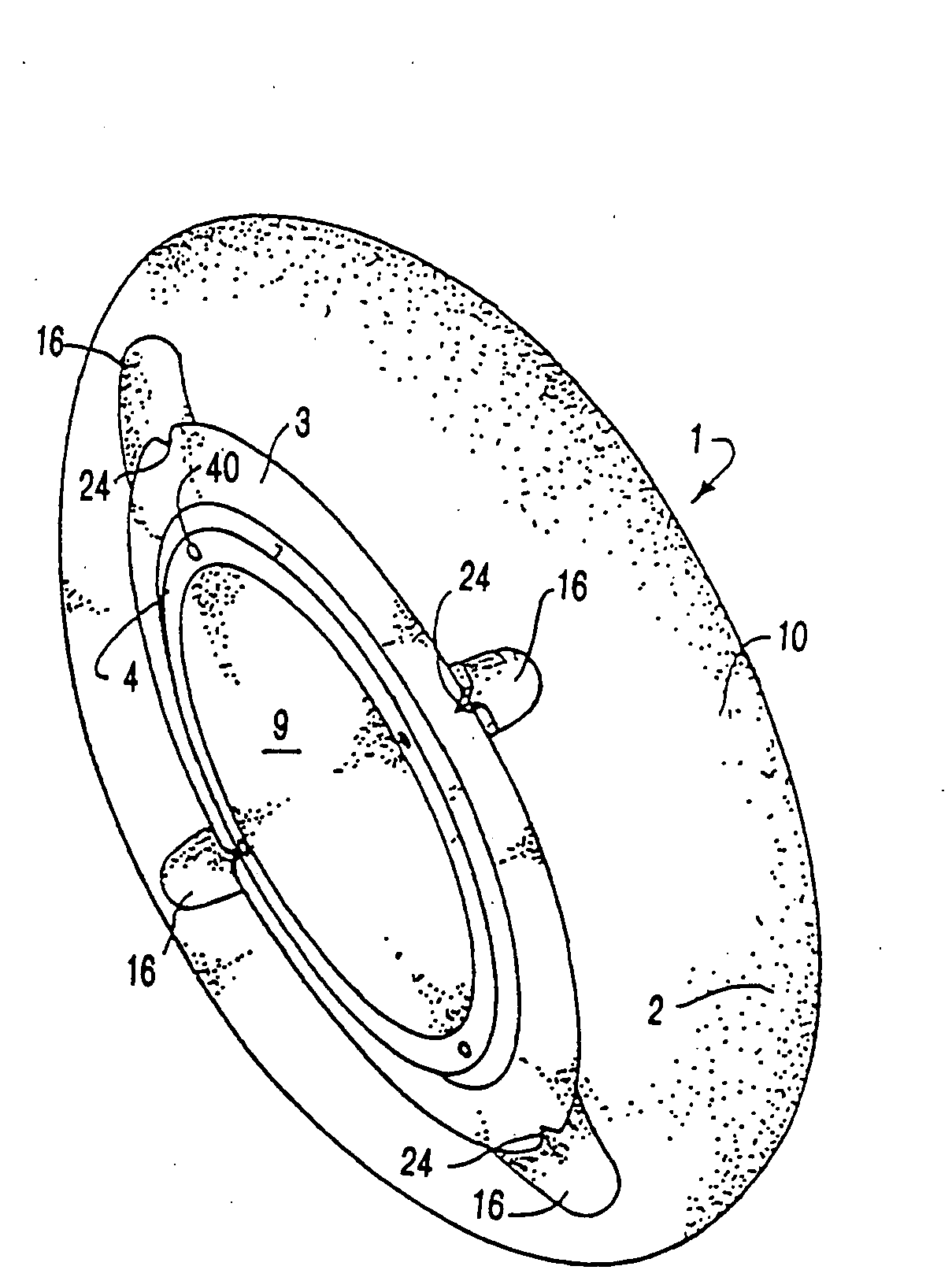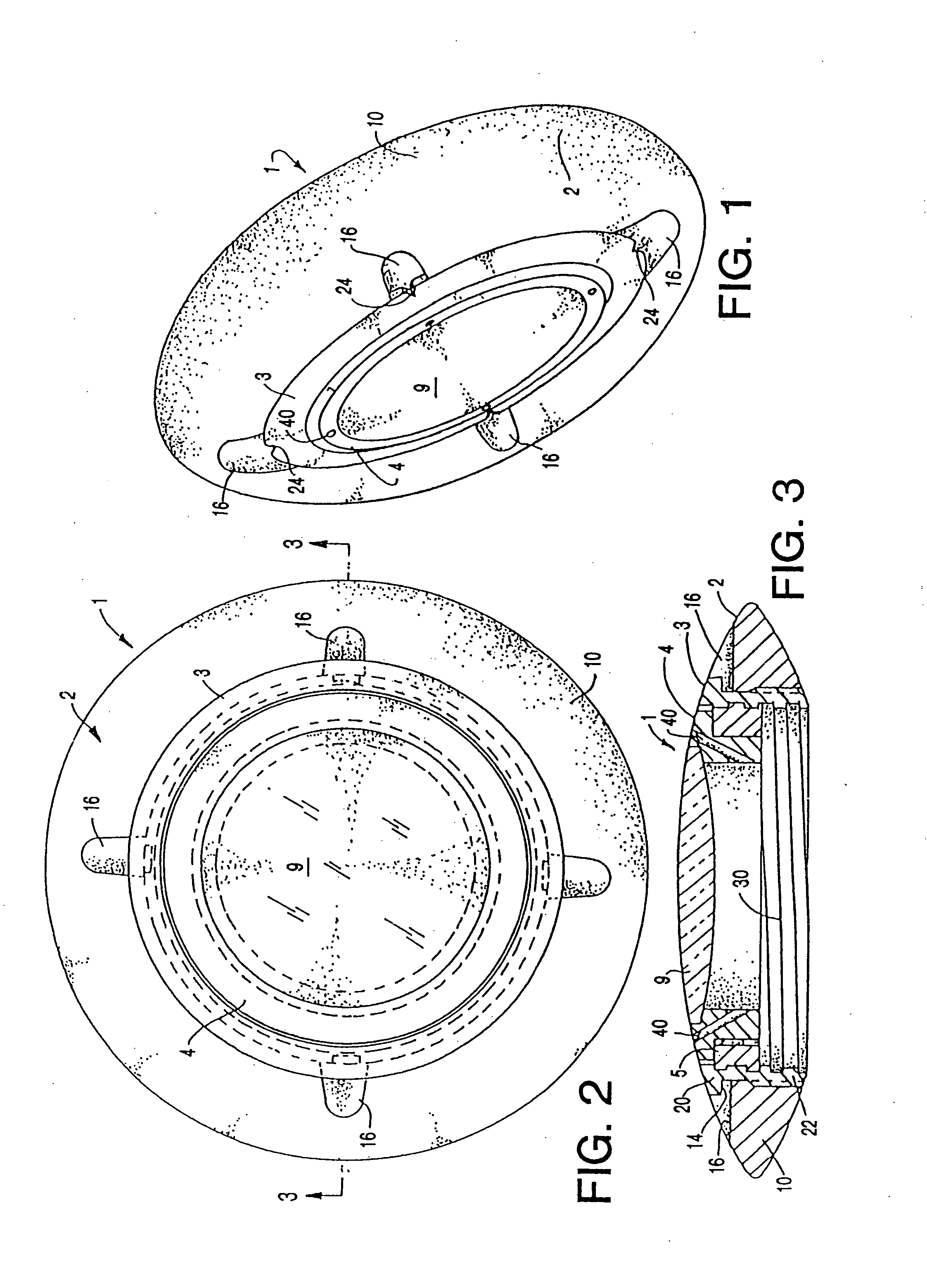Modular intraocular implant
a module and intraocular technology, applied in the field of ocular implants, can solve the problems of reducing the amount of light passing through the lens, affecting the effect of cataract surgery, so as to facilitate the implantation during cataract surgery, facilitate post-surgical adjustment, and simple replacement of the corrective lens
- Summary
- Abstract
- Description
- Claims
- Application Information
AI Technical Summary
Benefits of technology
Problems solved by technology
Method used
Image
Examples
Embodiment Construction
[0068]The adjustable intraocular insert of the present invention is indicated generally by reference numeral 1 in the drawings. Insert 1 has several principal components including an outer or base annulus 2 and a concentric second annulus 3. An adjustable lens mount assembly, indicated generally by reference numeral 4 in FIGS. 5A and 5B, is rotatably mounted in second annulus 3. In the preferred embodiment of FIGS. 1-3, the lens mount assembly 4 comprises two pieces, employing an externally threaded ring 5. Another embodiment of the adjustable intraocular insert, indicated generally be reference numeral 1′ in FIGS. 9A and 9B, employs a one-piece lens holder 7 (FIGS. 10A and 10B) which includes an externally threaded annular skirt 8. In any event, the lens holder seats a refractive lens 9. The various components of the adjustable intraocular insert will now be described in greater detail.
[0069]The base annulus 2, shown in greater detail in FIGS. 8A-8D, is sized and configured to fit ...
PUM
 Login to View More
Login to View More Abstract
Description
Claims
Application Information
 Login to View More
Login to View More - R&D
- Intellectual Property
- Life Sciences
- Materials
- Tech Scout
- Unparalleled Data Quality
- Higher Quality Content
- 60% Fewer Hallucinations
Browse by: Latest US Patents, China's latest patents, Technical Efficacy Thesaurus, Application Domain, Technology Topic, Popular Technical Reports.
© 2025 PatSnap. All rights reserved.Legal|Privacy policy|Modern Slavery Act Transparency Statement|Sitemap|About US| Contact US: help@patsnap.com



